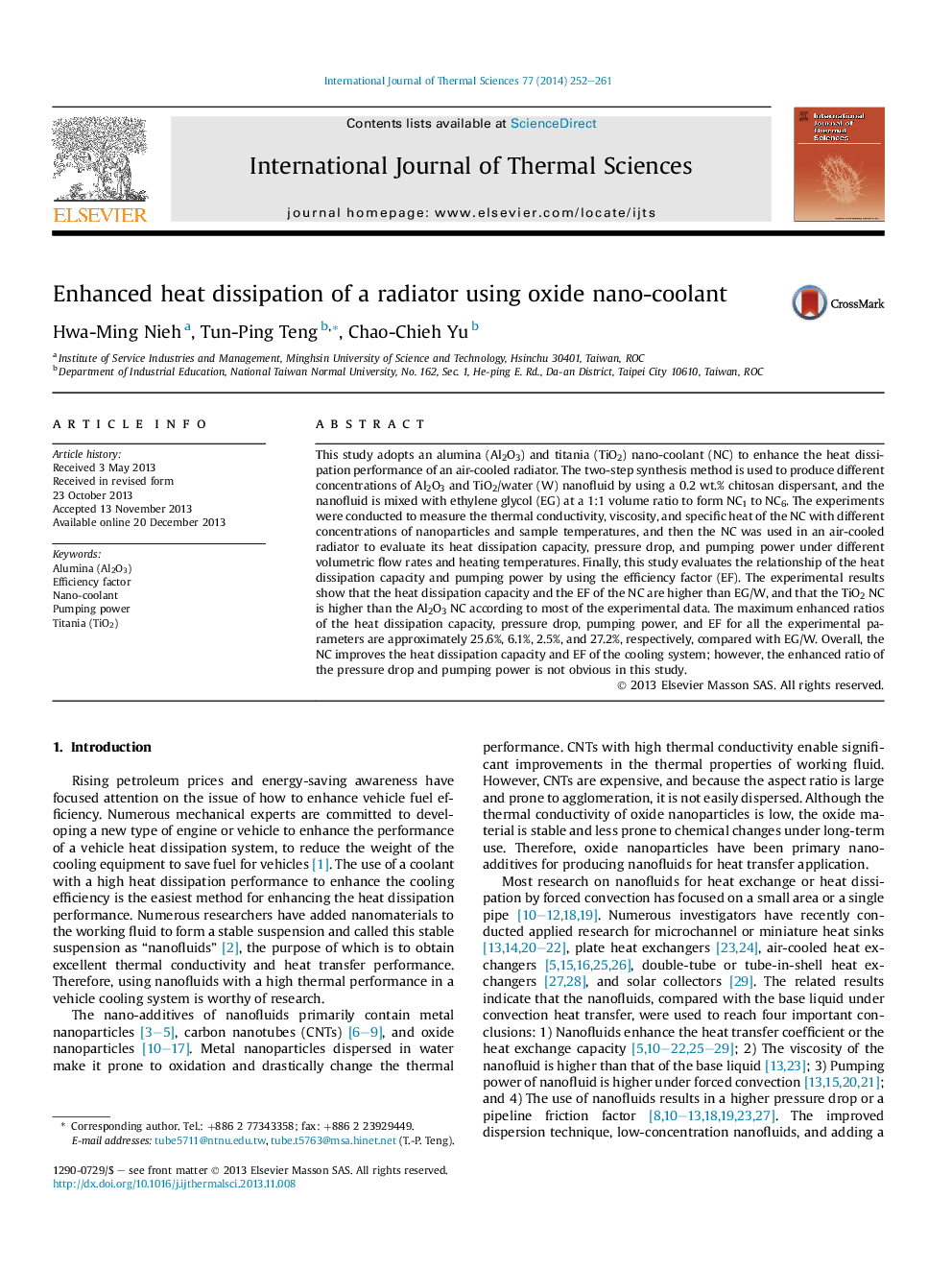| Article ID | Journal | Published Year | Pages | File Type |
|---|---|---|---|---|
| 668461 | International Journal of Thermal Sciences | 2014 | 10 Pages |
•We employed oxide nano-coolant (NC) in air-cooled radiator for heat dissipation.•We produced the Al2O3 and TiO2 NC by the two-step synthesis method.•The heat dissipation capacity and the EF of the NC are higher than EG/W.•The enhanced ratio of the pressure drop and pumping power is not obvious.•The maximum enhanced ratios of EF for TiO2-NC6 was 27.2% compared with EG/W.
This study adopts an alumina (Al2O3) and titania (TiO2) nano-coolant (NC) to enhance the heat dissipation performance of an air-cooled radiator. The two-step synthesis method is used to produce different concentrations of Al2O3 and TiO2/water (W) nanofluid by using a 0.2 wt.% chitosan dispersant, and the nanofluid is mixed with ethylene glycol (EG) at a 1:1 volume ratio to form NC1 to NC6. The experiments were conducted to measure the thermal conductivity, viscosity, and specific heat of the NC with different concentrations of nanoparticles and sample temperatures, and then the NC was used in an air-cooled radiator to evaluate its heat dissipation capacity, pressure drop, and pumping power under different volumetric flow rates and heating temperatures. Finally, this study evaluates the relationship of the heat dissipation capacity and pumping power by using the efficiency factor (EF). The experimental results show that the heat dissipation capacity and the EF of the NC are higher than EG/W, and that the TiO2 NC is higher than the Al2O3 NC according to most of the experimental data. The maximum enhanced ratios of the heat dissipation capacity, pressure drop, pumping power, and EF for all the experimental parameters are approximately 25.6%, 6.1%, 2.5%, and 27.2%, respectively, compared with EG/W. Overall, the NC improves the heat dissipation capacity and EF of the cooling system; however, the enhanced ratio of the pressure drop and pumping power is not obvious in this study.
